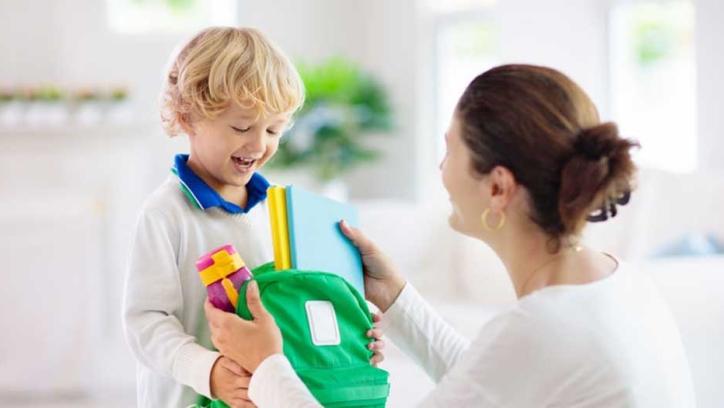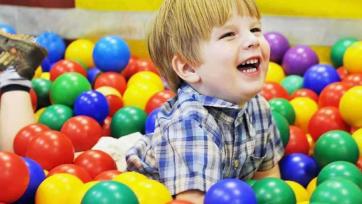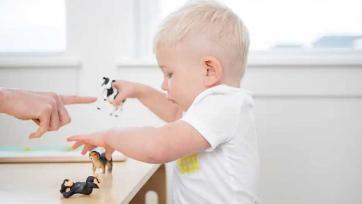Children have boundless energy and curiosity that must be channelled into constructive activities. When children are running around all day, it can be hard to get them to sit still long enough to do their schoolwork. Fortunately, there are ways to make mornings more stress-free for you and your kids. In this blog post, we'll explore some steps you can take to ensure a stress-free morning.

Pick out their outfit the night before.
Creating a positive mood first thing in the morning is a great approach to kick off a productive day. Here are five tips for a stress-free morning with kids:
1. Get organized and set some ground rules. Please make sure everyone knows what's expected of them before they get out of bed, and stick to those boundaries. This will help keep things calm and orderly.
2. Establish a morning routine. Set specific times for each child to get up, eat breakfast, brush their teeth, etc. This way, they know what to expect and won't be surprised when things happen outside their routine.
3. Put away toys and other materials that could be disruptive during the morning hours. Put all electronics and books away, so there's less clutter and less potential for distractions.
4. Have some quiet time together as a family in the morning before everyone starts getting ready for the day ahead. This can be used for prayer or just taking a few minutes to relax before starting the day.
5. Let them have fun too! Playing games or doing something special together before school can help ease any anxiety or excitement that may come with starting the day."
Have Them Get Dressed First, Before Doing Anything Else
There's always a good time to get children dressed, but mornings can be particularly challenging. With everyone rushing to get ready, it can be difficult for children to feel organized and prepared for the day. Here are seven steps to help make the morning more stress-free for all involved:
1. Have everyone get dressed first and then have their breakfast. This will allow them to feel more in charge of their mornings and reduce the likelihood of surprises.
2. Establish specific morning routines for everyone in the family. This will help children know what to expect and decrease the number of surprises when they wake up.
3. Allow time for meaningful conversations before getting started with the day. This will help build relationships and create memories that will last a lifetime.
4. Help children learn how to handle frustration and boredom by providing opportunities to try new activities or experiences throughout the day. This will keep things exciting and prevent them from growing bored with routine tasks.
5. Be patient with kids - they may not always understand what's required of them in the morning, but they'll eventually catch on. And remember, you're always young enough to start learning new skills!
6. Reward good behaviour during mornings - this will encourage kids to follow through with their plans and make waking up easier for everyone involved!
Make Sure All Gadgets are Put Away
Making sure all gadgets are put away at the end of the day can help create a more stress-free morning with kids. By taking these simple steps, you can ensure they're not running around and adding to your stress level.
1. Set a one-hour timer and have your kids sit down and organize all their toys. As a bonus, it will make their mornings less chaotic and offer them a feeling of success.
2. Have them put away the toys by colour and by type (plastic vs wooden). This way, they'll quickly identify what belongs to them and what doesn't.
3. If there's an electronic toy that needs batteries replaced, have your children bring it to you so you can do it before bedtime. This will help avoid power struggles in the morning when trying to get those pesky devices turned off!
4. Give children storage containers or baskets to place their toys after they're put away. This will cut down on search time during the morning and keep things more organized overall.
Practice Stretching Together or Doing a Small Exercise
When it comes to getting kids out of the house in the morning, one way to ease their anxiety is by setting some ground rules. One such direction is that they need to be able to stretch together before they leave. This will help them get used to the idea of testing and can even lead to them enjoying a morning stretching routine! Also, exercising before breakfast is always a good idea, as this sets the tone for the day. Examples include doing quick squats or Twist and Shouting with your child.
Play Music
Having a stress-free morning with kids can be a lot easier than you think! Start by setting the tone for the day by setting limits on screen time and homework. Explain to your youngster why these restrictions are necessary if they are old enough to comprehend them. If they are younger, try using simple phrases like "We need some time to ourselves today" or "We need some quiet time to work".
Once you have set the limits, it's essential to follow through. If your child is asking for something they cannot have right then and there, be firm but fair. For example, if they ask to play video games after school, say no but offer alternative activities like going outside or doing their chores.
Finally, make sure you are stressed-free! It can easily spill over onto our children when things get hectic at home. Make sure you take time each day to relax and rejuvenate. This will help you be more patient with your children and set an excellent example for them.
Make a Morning Checklist
It would help if you wrote down your daily to-dos as soon as you left the bed. By doing so, you will be better able to concentrate and avoid distractions. Here are some steps to creating a stress-free morning:
1. Have a plan. Before getting out of bed, list what needs to be done that day. This will help keep you organized and from becoming overwhelmed by everything waiting for you.
2. Set boundaries. Try to do only a little at a time in the morning. Instead, focus on one or two tasks and complete them.
3. Take breaks. If something feels too complex or tedious, take a break until you're ready to try again. This will help prevent burnout and increase your efficiency later in the day.
4. Stay positive! Starting the day with a positive mindset can be challenging, but it's essential to have a successful morning overall. Remind yourself why it's worth it, and celebrate small victories along the way.








